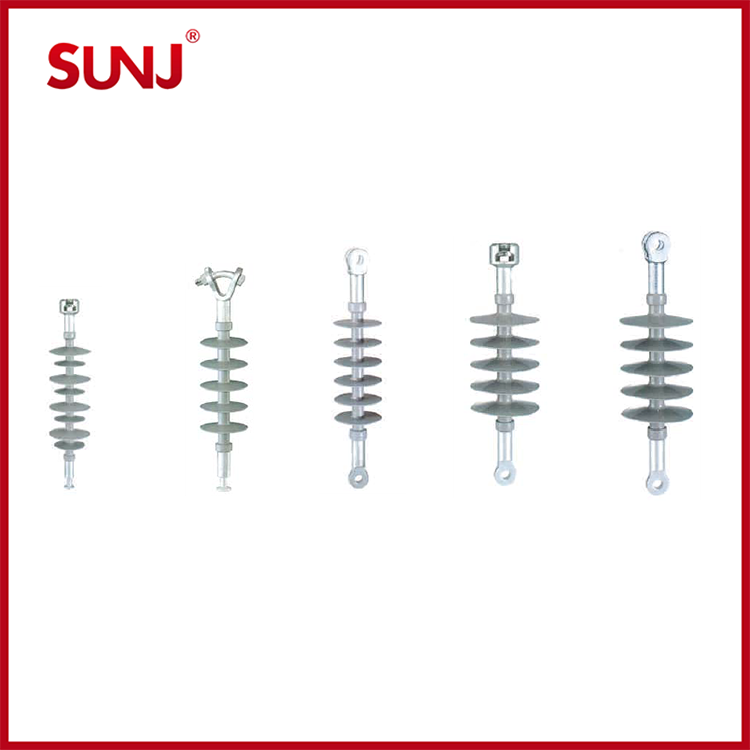Dead End Insulator
Dead end insulators are essential components used in power transmission and distribution systems. They are designed to provide robust insulation and mechanical support to conductors at terminal points where the line ends or changes direction.

Dead End Insulator Products Information
Product Overview:
Dead end insulators are essential components used in power transmission and distribution systems. They are designed to provide robust insulation and mechanical support to conductors at terminal points where the line ends or changes direction.
Key Features:
● High Dielectric Strength: Ensures effective insulation and prevents electrical leakage.
● Durable Materials: Typically made from high-grade porcelain, polymer, or glass, offering excellent weather resistance and longevity.
● Mechanical Strength: Designed to withstand high mechanical loads and tension from conductors.
● Corrosion Resistance: Resistant to environmental factors such as UV radiation, moisture, and chemical contaminants.
● Easy Installation: Engineered for straightforward installation and maintenance, reducing downtime and labor costs.
● Lightweight: Polymer and composite variants are lighter than traditional materials, easing handling and installation.
● Temperature Stability: Maintains performance across a wide range of temperatures, ensuring reliability in various climatic conditions.
● Compliance with Standards: Meets or exceeds relevant IEC, ANSI, and other international standards for safety and performance.
Dead end insulators are critical for ensuring the reliability and safety of electrical power systems. With their superior insulation properties, mechanical strength, and durability, they provide a dependable solution for terminating and supporting conductors in various high-stress applications.
Product Specification:
| Type | Rated voltage(kV) | Rated mechanical load(kN) | Height(mm) | Insulating distance(mm) | Min norminal creepage distance(mm) | Diameter of shed(mm) | 1 min power frequency wet withstand voltage(kV) | Lighting impulse withstand voltage(kV) | Number of shed |
| FXB-12/70 | 12 | 70 | 356±15 | 183 | 450 | φ99 | 42 | 95 | 4 |
| FXB-24/70 | 24 | 70 | 464±15 | 269 | 680 | φ99 | 60 | 145 | 6 |
| FXB-36/70 | 36 | 70 | 558±15 | 371 | 900 | φ99 | 95 | 200 | 8 |
The correct requirements for installation of suspension insulators are as follows:
1.The installation should be firm and the connection reliable to prevent water accumulation.
2.Before installation, dust, attachments and paint on the surface of the insulator should be removed.
3.There should be no compression at the connections with poles and wire fittings.
4.The spring pins, screws and nails on the tension string should be inserted from top to bottom.
5.The spring pins, screws and nails on the hanging string should be inserted towards the power receiving side, the lines on both sides should be inserted from inside to outside, and the center line should be inserted from left to right.
6.The gap between the insulator skirt and the live parts should be greater than 50mm.
7.After the suspension clamp is installed, the insulator string should be perpendicular to the ground plane. In special cases, the inclination angle along the line direction should be less than 5°, and the offset value should be less than 200mm.
8.When installing porcelain cross arm insulators, the top skew along the line should be less than 10mm, the top should be tilted upwards by 5° to 15°, and the skew should be less than 20mm.
9.The flat surface of the fixed iron bolt head of the pin insulator should be close to the component, and the porcelain head should not be skewed after tightening.
10.The threading directions of various hardware bolts, nails and spring pins on insulator strings, conductors and lightning protection lines should be consistent.
In addition, the appearance of the insulator should be inspected before installation to ensure that it is free of defects and that the model and specifications meet the requirements. When installing post-type insulators, flat pads and spring washers should be added. The voltage level of the insulator must not be lower than the rated voltage of the line, and the leakage distance should adapt to the contamination of the line. When installing post-type insulators, flat pads and spring washers should be added. The voltage level of the insulator must not be lower than the rated voltage of the line, and the leakage distance should adapt to the contamination of the line.
Over 18 years direct factory
Dead End Insulator More Information
SUNJ Electric a power transmission and distribution enterprise with R&D, manufacturing, trading and services.
With excellent quality, design and manufacture and competitive prices, SUNJ products are top sellers in China and have exported to Asia, Europe, America, Middle-East and Africa and numberous other regions.
We warmly welcome all over the world friends cooperate with us. Together to contribute a better and stronger power system.
- +86 18875849654
- [email protected]
- No. 1965, Liubai Road, Liushi Town, Wenzhou City, Zhejiang Province, China
Dead End Insulator More About SUNJ
Product Package
Test Equipment



